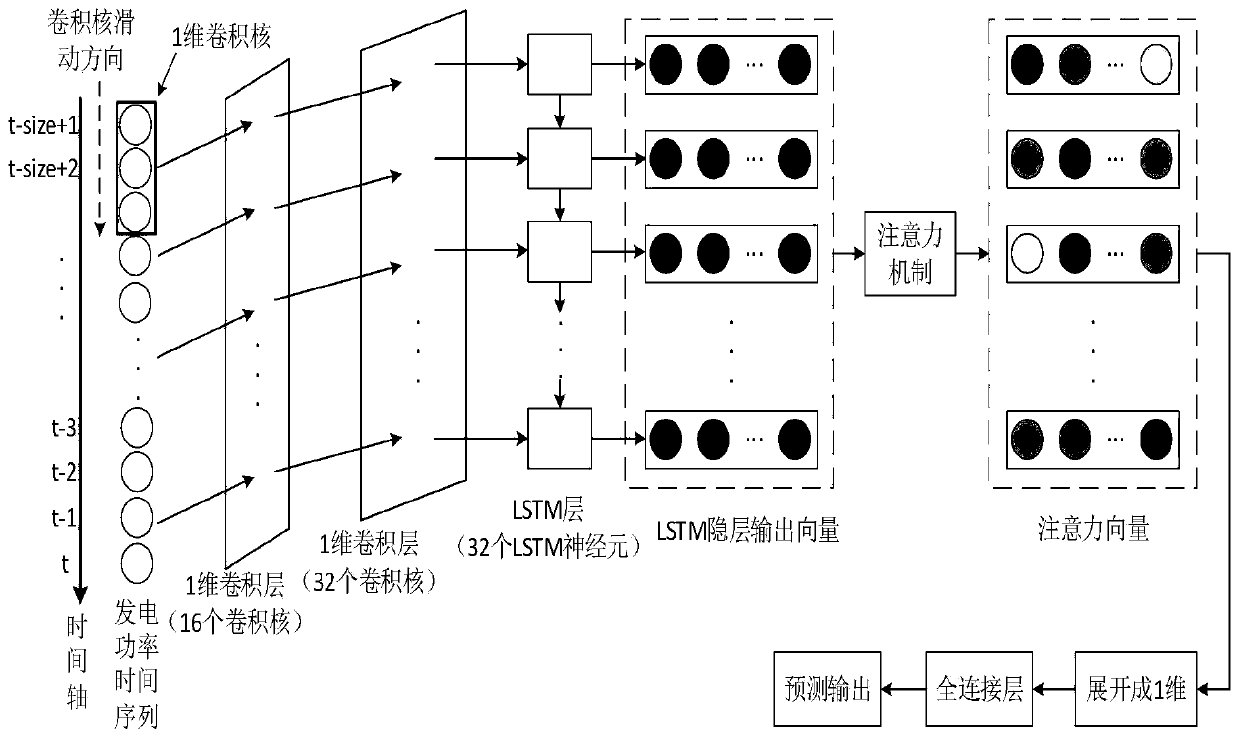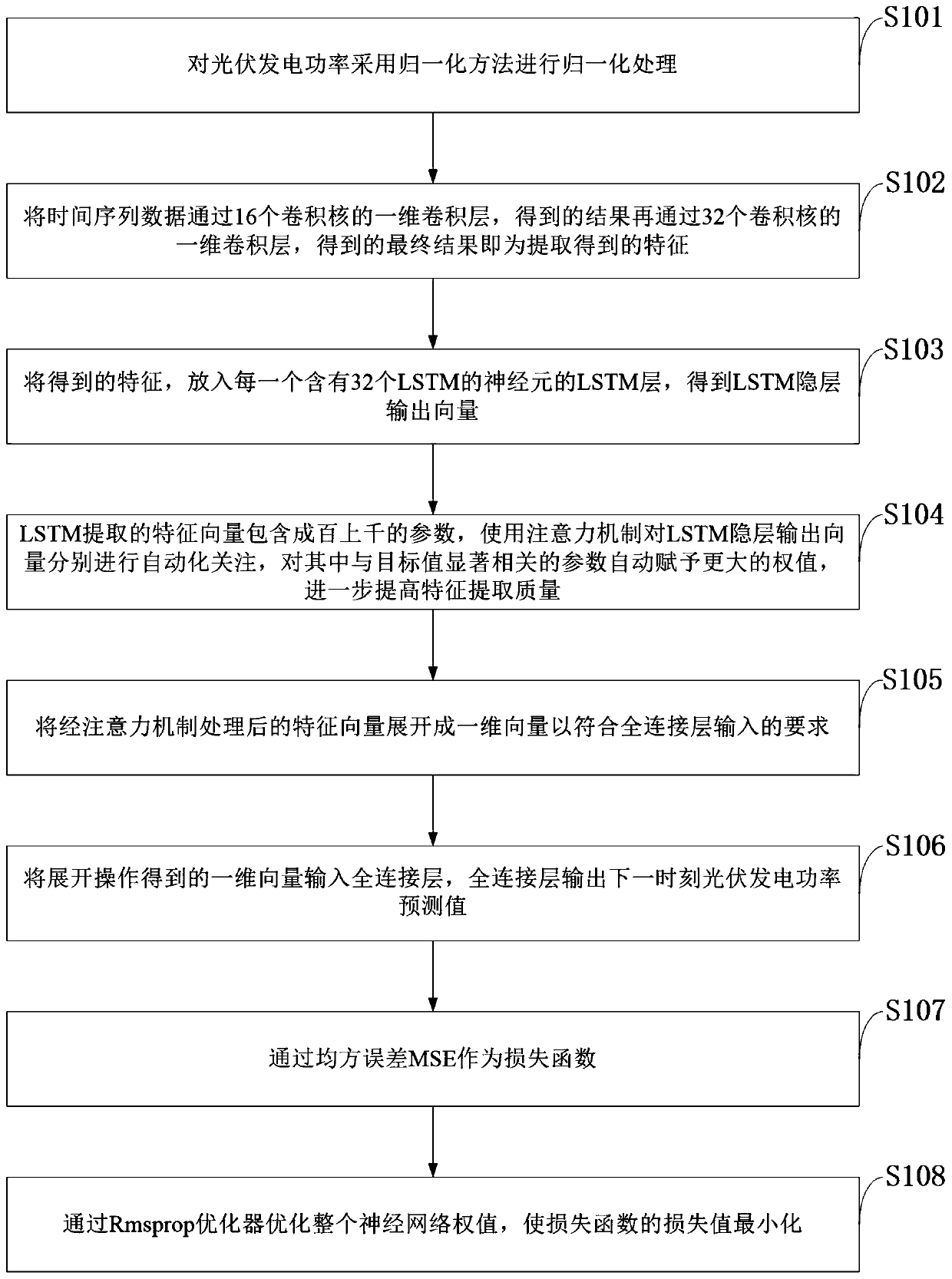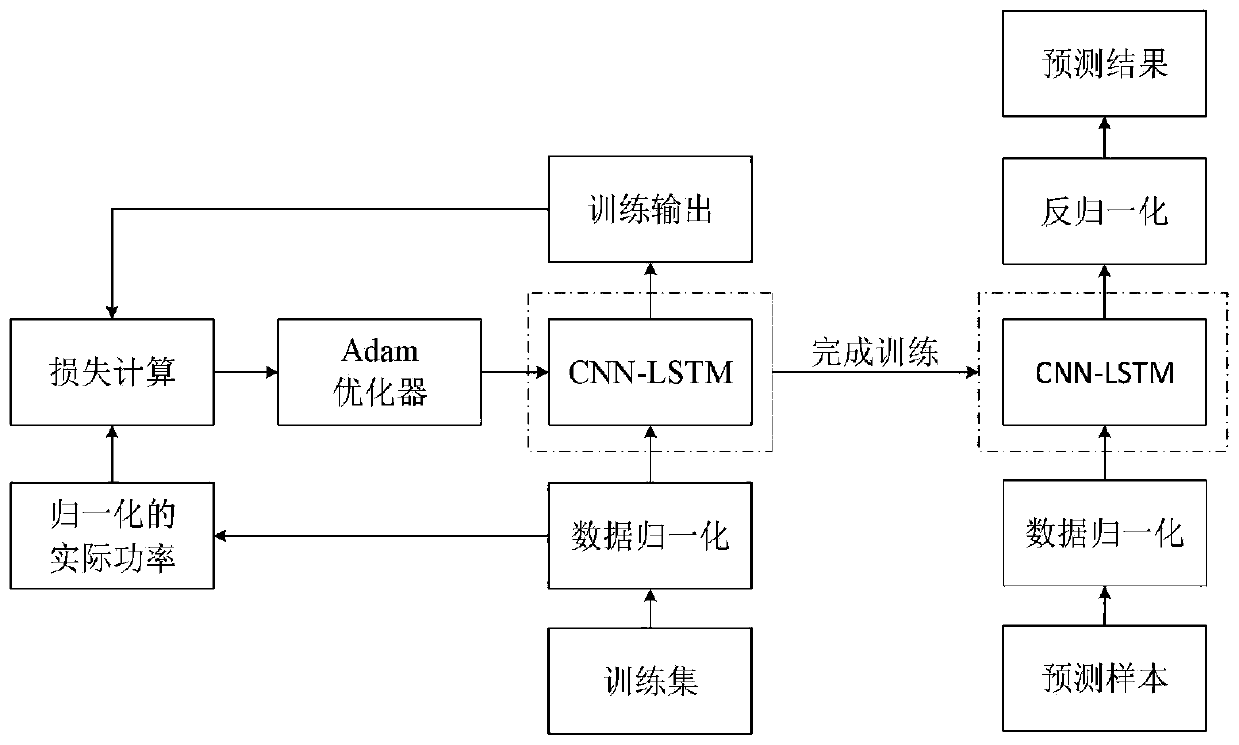CNN-based LSTM photovoltaic power generation power prediction model and construction method thereof
A photovoltaic power generation and prediction model technology, applied in the field of prediction or optimization, can solve the problems of low prediction model accuracy, low prediction accuracy, slow iterative convergence, etc., and achieve excellent prediction ability, high prediction accuracy, and high portability Effect
- Summary
- Abstract
- Description
- Claims
- Application Information
AI Technical Summary
Problems solved by technology
Method used
Image
Examples
Embodiment Construction
[0059] In order to make the object, technical solution and advantages of the present invention more clear, the present invention will be further described in detail below in conjunction with the examples. It should be understood that the specific embodiments described here are only used to explain the present invention, not to limit the present invention.
[0060] Aiming at the problem that traditional machine learning algorithms rely on manually designed sample features and have shortcomings in feature extraction, resulting in low accuracy of prediction models. The invention implements the CNNLSTM model based on the Python language and the Keras framework, and has the advantages of fast modeling, high portability, and high prediction accuracy.
[0061] The application principle of the present invention will be described in detail below in conjunction with the accompanying drawings.
[0062] Such as figure 1 As shown, the structure of the CNNLSTM-based photovoltaic power pre...
PUM
 Login to View More
Login to View More Abstract
Description
Claims
Application Information
 Login to View More
Login to View More - R&D
- Intellectual Property
- Life Sciences
- Materials
- Tech Scout
- Unparalleled Data Quality
- Higher Quality Content
- 60% Fewer Hallucinations
Browse by: Latest US Patents, China's latest patents, Technical Efficacy Thesaurus, Application Domain, Technology Topic, Popular Technical Reports.
© 2025 PatSnap. All rights reserved.Legal|Privacy policy|Modern Slavery Act Transparency Statement|Sitemap|About US| Contact US: help@patsnap.com



